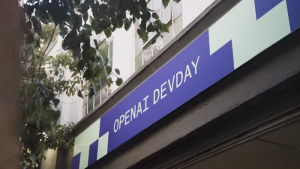IBM Brings Mainframe to the Midrange with zEnterprise BC12 Announcement
![]() With more than 200 new Enterprise clients running on the System z mainframes three years after its 2Q10 introduction, IBM has shown that mainframe systems are not going anywhere soon. Now it is bringing mainframe systems to the mid-market with the zEnterprise BC12 (zBC12), a new “business class” version of System z announced last week. With a starting price of $75,000 for a 50 MIPS system with 8 GB of memory, four FICON fibre connection cards and four OSA cards to provide multiple fast networking connections,and the capacity to grow to 4,950 MIPS, it is designed to replace an entire server farm in a single box.
With more than 200 new Enterprise clients running on the System z mainframes three years after its 2Q10 introduction, IBM has shown that mainframe systems are not going anywhere soon. Now it is bringing mainframe systems to the mid-market with the zEnterprise BC12 (zBC12), a new “business class” version of System z announced last week. With a starting price of $75,000 for a 50 MIPS system with 8 GB of memory, four FICON fibre connection cards and four OSA cards to provide multiple fast networking connections,and the capacity to grow to 4,950 MIPS, it is designed to replace an entire server farm in a single box.
The zBC12 comes in two configurations, the base system with the IBM’s z/OS partitions (mainframe speak for virtual machines) under the z/VM hypervisor, and the Enterprise Linux Server (ELS) version, which adds z/Linux and is designed to run large numbers of Linux applications. A package system, the ELS comes with 54 GB of memory, 8 FICON and 8 OSA channels, two Linux cores running under z/VM, a three-year z/VM license, and three years of hardware maintenance. Kelly Ryan, director and business line executive for System z platforms said the ELS in particular is designed to meet the needs of mid-sized companies who typically run multiple Linux systems. Midrange companies will be comfortable with it becasue “Linux is Linux, and z/Linux is exactly like the Linux they are used to.” IBM actually resells Red Had and SUSE Linux, so it literally is the same.
So why, besides the price, would mid-sized organizations want to venture into the world of mainframe systems? First, System z is not your father’s mainframe. It is completely automated, able to run on automatic with no need for staff with special skills to manage it. European mainframe expert and former Gartner Group Analyst Josh Krischer tells a story about a mid-range sized airline that was losing its only mainframe systems expert. The CIO was considering moving onto several midrange servers. Krischler convinced him to keep the mainframe. It ran on automatic with no problems or need for human intervention, quality-of-service remained excellent, and it was cheaper in total lifetime cost than the multi-server alternative.
The ELS is designed as a consolidation system, allowing a company to consolidate large numbers of Linux servers into the single box, with a smaller footprint, less demand on power and cooling, less need for human attention. One European grocery chain consolidated 115 distributed Linux servers onto the z114, the predecessor to the BC12, increasing security, improving quality of service, and saving money. And IBM announced a remote monitoring service along with the BC12, so midrange companies can have IBM run their zEnterprise mainframes for them at a fraction of the cost of having full-time staff. All of this simplifies the infrastructure. IBM says you can run up to 520 virtual servers under moderate size Oracle workloads on a single zBC12.
And it provides internal burst capability to cover either expected or unexpected demand increases. The lower-end zBC20 systems actually come with a great deal of extra capacity built in. To access that all you have to do is ask IBM to throw the switch remotely. Of course that increases the price, but since you can wait until you need it to purchase it, you don’t have to pay extra up front for that greater capacity.
Another advantage of consolidation is that everything runs on the same physical box. You can run your data warehouse on a z/OS partition next to your Linux applications, with each fully isolated in its own partition, which means that a rogue application cannot impact the performance of the other applications. Partitioning also can be used to separate different classes of users, providing high security to eliminate any risk that employees or customers accessing the company Web site running on the BC12 will access data they are not cleared to see.
IBM sells several zLinux applications for the ELS to support different use cases, including a Cognos analytics engine, the WorkLight mobile app development platform, an analytics system to help midsized banks identify fraud attempts and money laundering, as well as tax cheating, in near real time.
The big advantage is that the BC12 all but eliminates any need for IT staff to manage the infrastructure, freeing the typically small IT staffs of mid-sized organizations to focus on business alignment and the higher level services and software that provide business advantage. That allows the CIO to act as a true C-suite executive rather than just the head geek in the company.
A message from John Furrier, co-founder of SiliconANGLE:
Your vote of support is important to us and it helps us keep the content FREE.
One click below supports our mission to provide free, deep, and relevant content.
Join our community on YouTube
Join the community that includes more than 15,000 #CubeAlumni experts, including Amazon.com CEO Andy Jassy, Dell Technologies founder and CEO Michael Dell, Intel CEO Pat Gelsinger, and many more luminaries and experts.
THANK YOU













